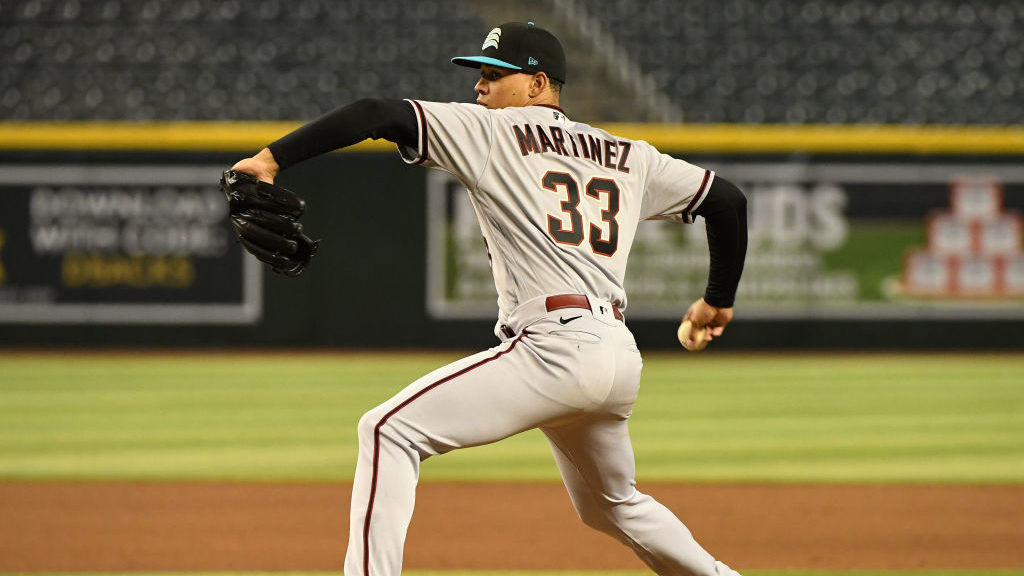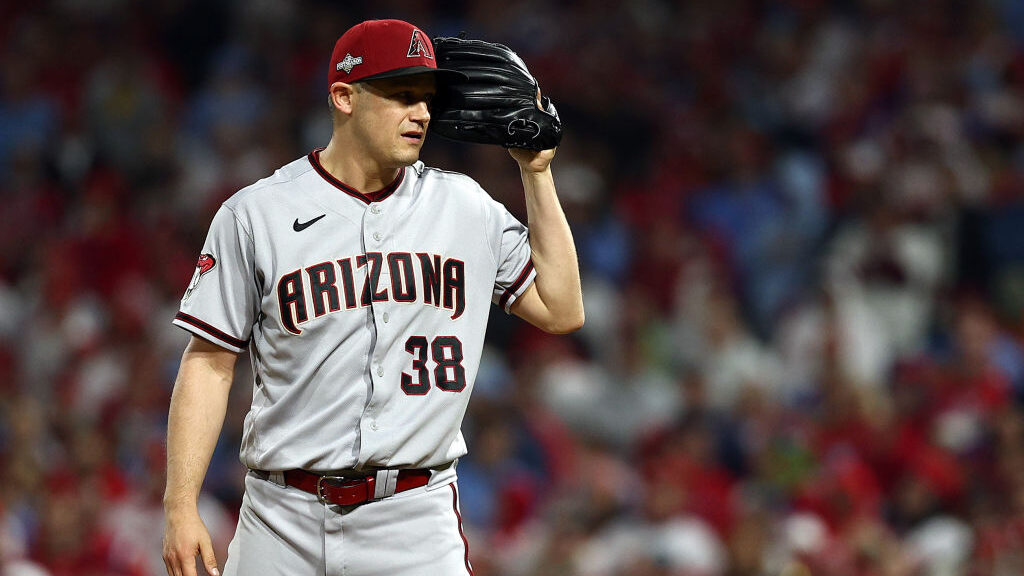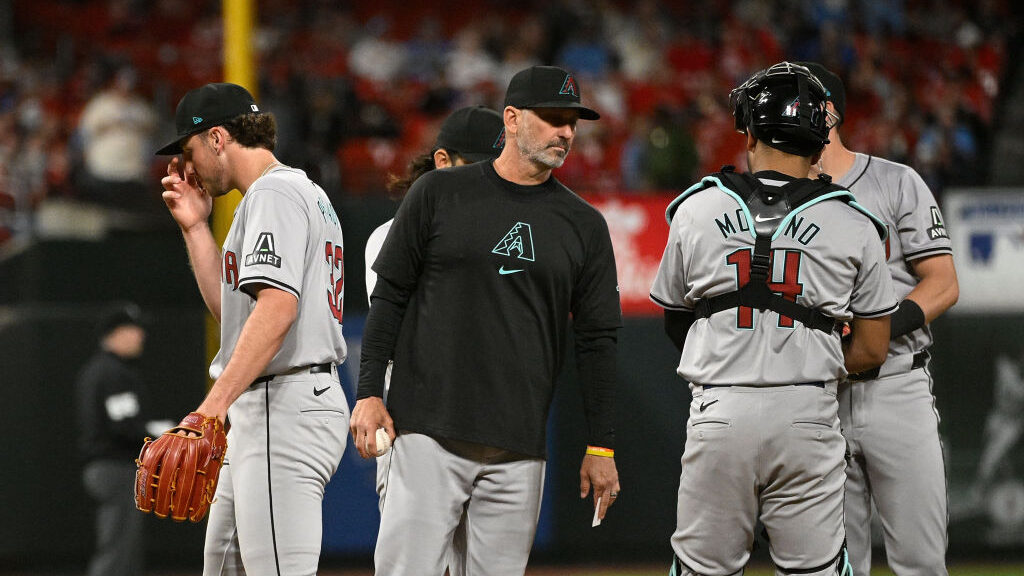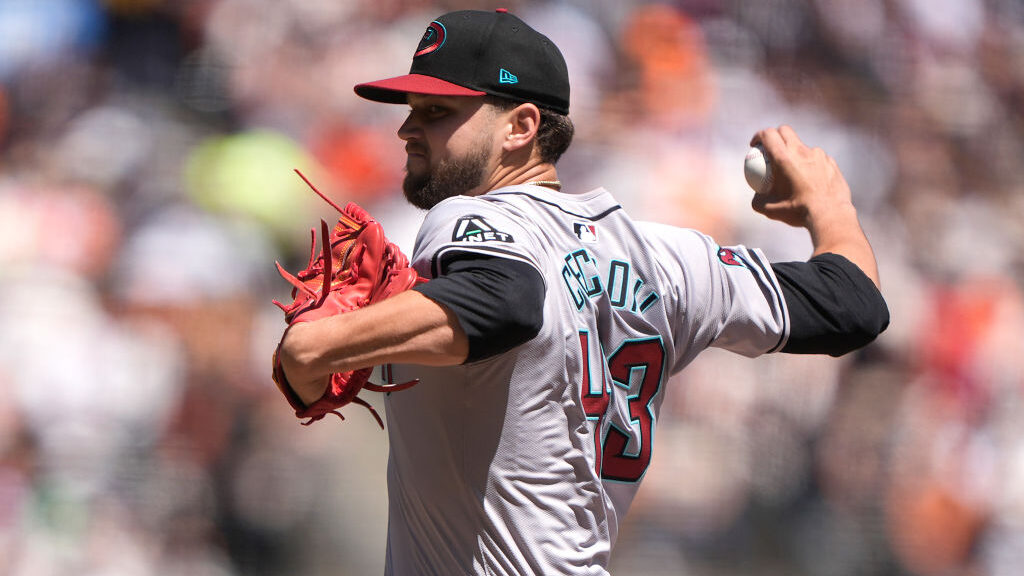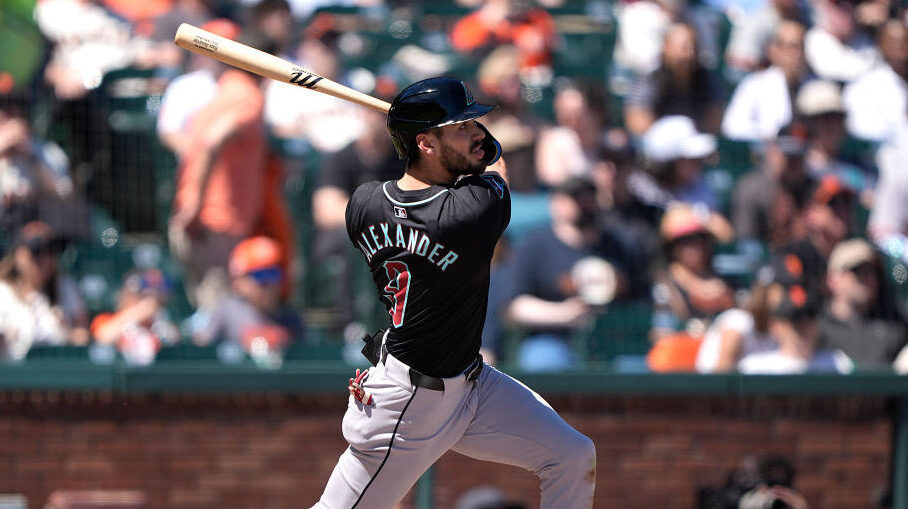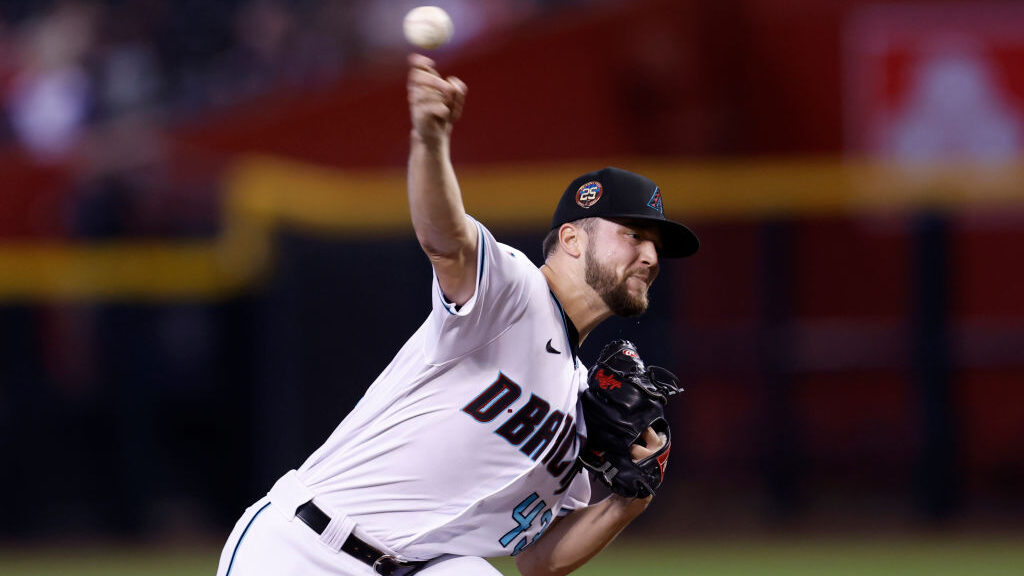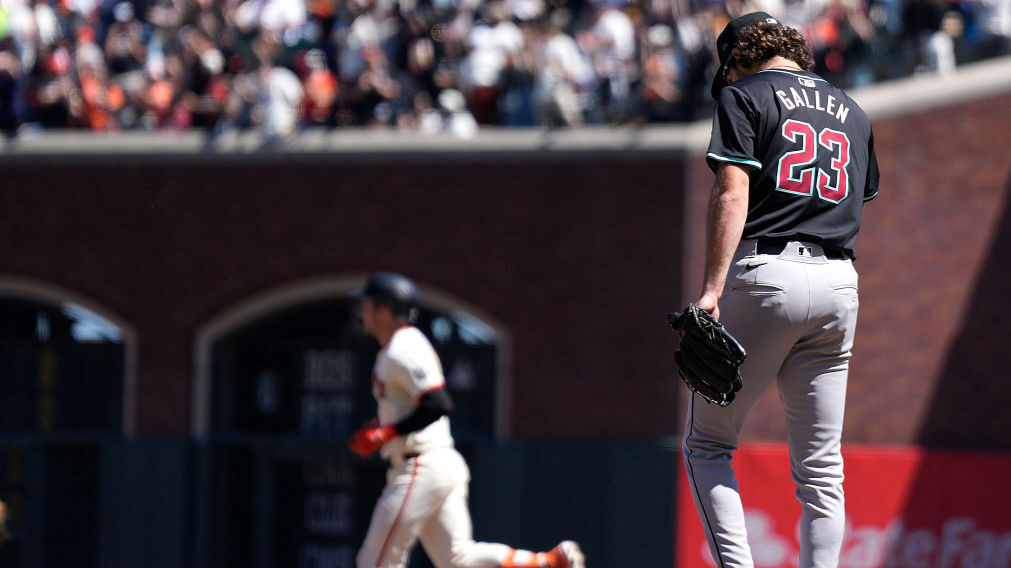Curt Schilling, Barry Bonds headline Contemporary Baseball Era player HOF ballot
Nov 7, 2022, 1:06 PM
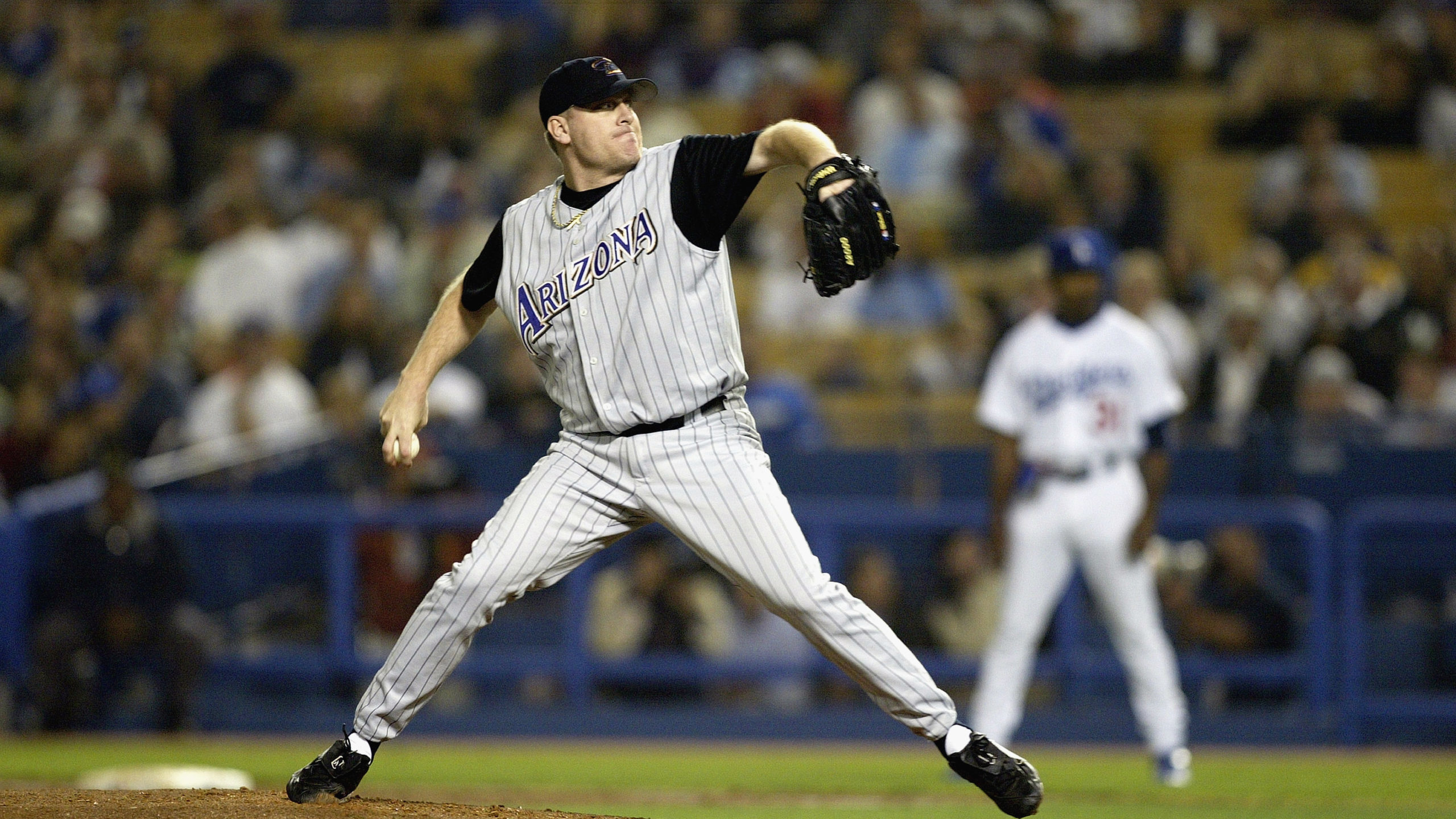
Curt Schilling #38 of the Arizona Diamondbacks throws against the Los Angeles Dodgers during the game on September 16, 2003 at Dodger Stadium in Los Angeles, California. The Diamondbacks defeated the Dodgers 3-2. (Photo by Jeff Gross/Getty Images)
(Photo by Jeff Gross/Getty Images)
Former Arizona Diamondbacks World Series hero Curt Schilling, as well as former Arizona State outfielder Barry Bonds, headline the Contemporary Baseball Era players ballot for the Hall of Fame class of 2023.
They join right-handed pitcher Roger Clemens, first basemen Rafael Palmeiro and Fred McGriff, left fielder Albert Belle and utility man Dale Murphy as the eight on the ballot.
This committee, formerly known as the Veterans Committee, determines if a player is deserving of Hall of Fame status once their eligibility on the Baseball Writers’ Association of America (BBWAA) ballot is up — 10 years as of 2014, 15 years before.
Both Schilling and Bonds had Hall of Fame playing careers based strictly on numbers. However, they both didn’t pass the character clause test, for one reason or another.
To get in as part of this committee, they have to obtain votes from at least 12 of the 16 voters to obtain induction — much like in the BBWAA, only the number of total voters decreases from 394 to 16. The committee will vote on induction on Dec. 4.
That said, let’s take a look at their individual candidacies.
Curt Schilling’s candidacy
Schilling ended his topsy-turvy candidacy a much less popular candidate in terms of likability. Like Bonds, the right-handed pitcher had a Hall of Fame career. Unlike Bonds, Schilling’s absence stems from his character post playing days.
There are a myriad of examples of Schilling making controversial posts on social media, not to mention his unrelenting dislike for the media. This is without mentioning the fallout from his video game company going bankrupt in 2012, as well as his firing from ESPN’s Sunday Night Baseball crew in 2016.
As a player, Schilling helped three franchises win a combined three World Series championships, including one with the D-backs in 2001 as, literally and figuratively, Randy Johnson’s right-hand man.
In his postseason career, Schilling went 11-2 with a 2.23 ERA. In his 2001 co-World Series MVP run, he went 4-0 with a 1.12 ERA overall (1-0, 1.69 ERA against the Yankees in the World Series).
He also added seven innings of one-run ball in Arizona’s short-lived title defense in the 2002 postseason, and announced he’d have wanted to represent the Diamondbacks should he achieved induction.
In the regular season, Schilling won 216 games while posting a 3.46 ERA and striking out 3,116 batters. Among pitchers with at least 3,000 innings, he’s 19th in FanGraphs’ wins above replacement.
The only pitcher ahead of him that’s not in the Hall of Fame is Clemens, who is a suspected performance-enhancing substance user.
Barry Bonds’ candidacy
Bonds had an impressive playing career at ASU. In 1984, he hit .360. In 1985, he hit .368 and clubbed 23 home runs. He also tied the NCAA record with seven consecutive at-bats with a base hit in the College World Series.
He was named to the All-Time College World Series Team in 1996.
His success in college translated to the pros as well. However, the slugger is a highly-suspected user of PEDs.
That said, he hit .298 with 762 home runs, 601 doubles, 514 stolen bases and a .444 on-base percentage across 22 seasons.
Only Babe Ruth (168.4) accumulated more fWAR as a position player than Bonds (164.4).
Bonds holds the all-time records in home runs, walks (2,558) and intentional walks (688). In 2002 and 2004, the former Pittsburgh Pirate and San Francisco Giant led all of baseball across the triple-slash — average, on-base and slugging.
The slugger ended his BBWAA Hall of Fame candidacy a more popular candidate than he entered, peaking at 66% in 2022. He, without question, had a Hall of Fame career. However, can he overcome the suspected steroid use on the Contemporary Era Committee?

